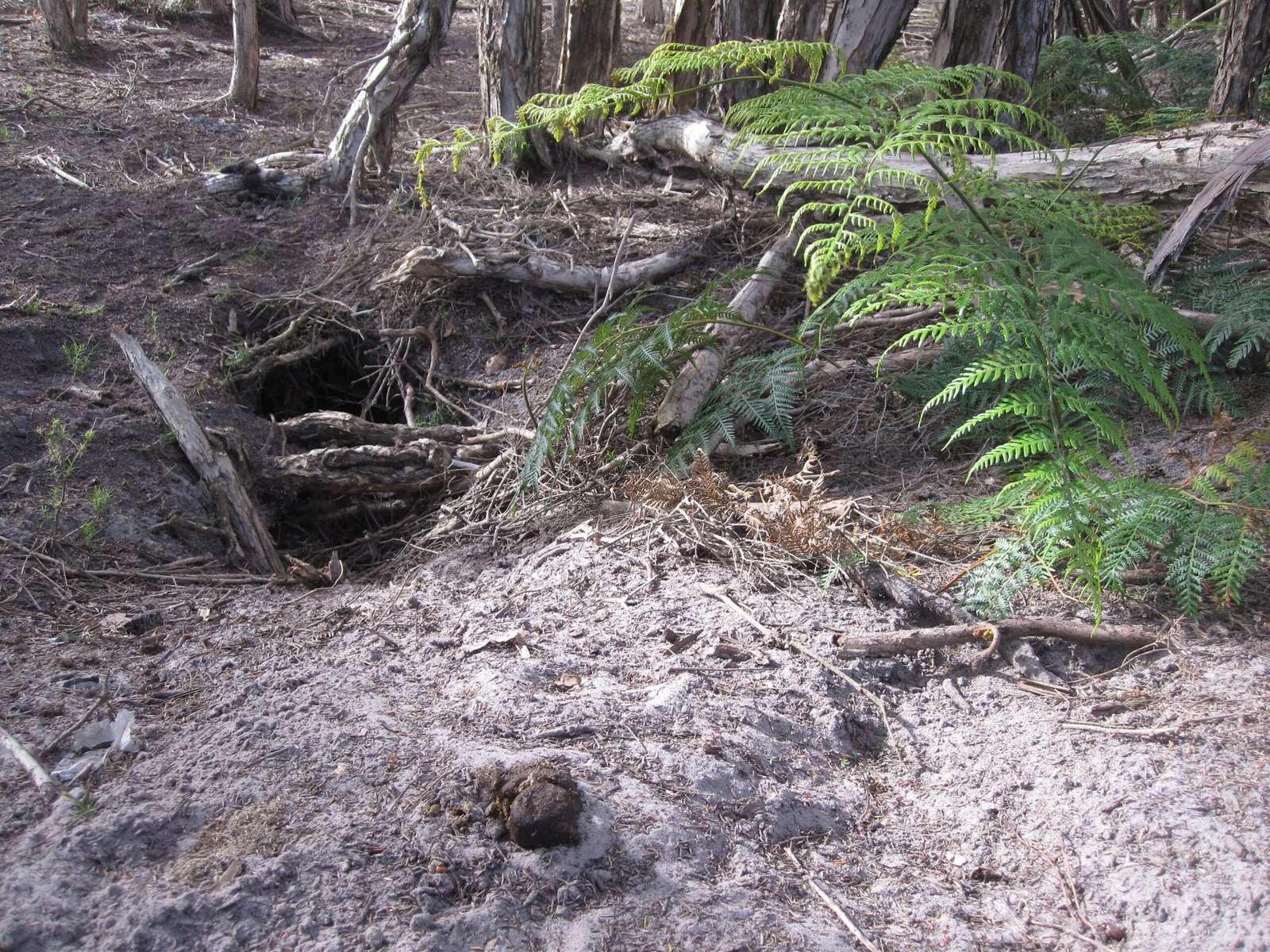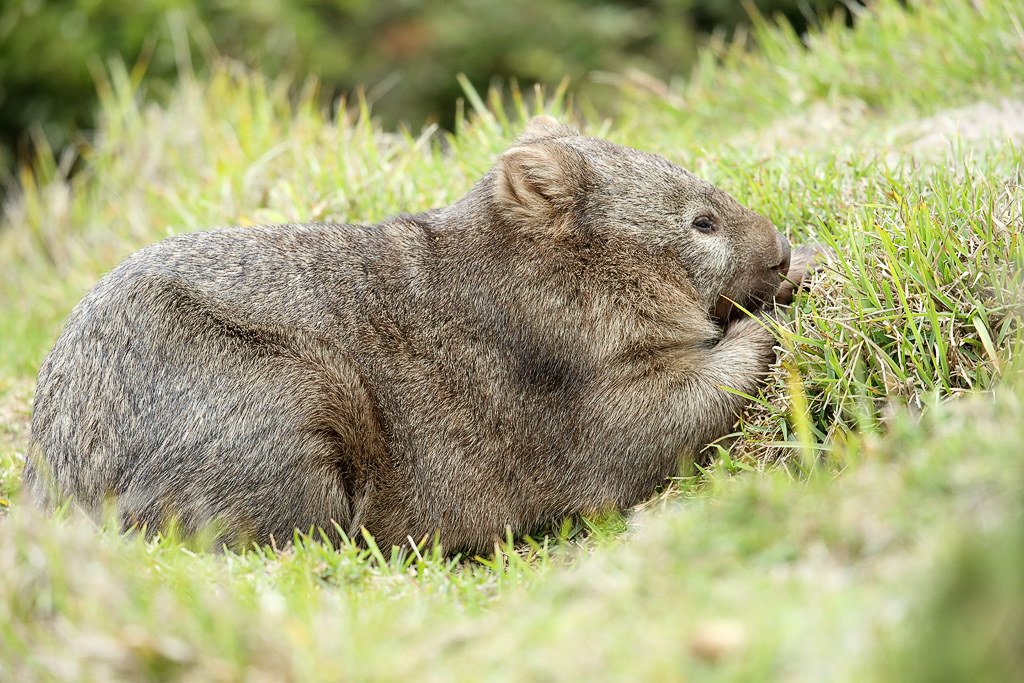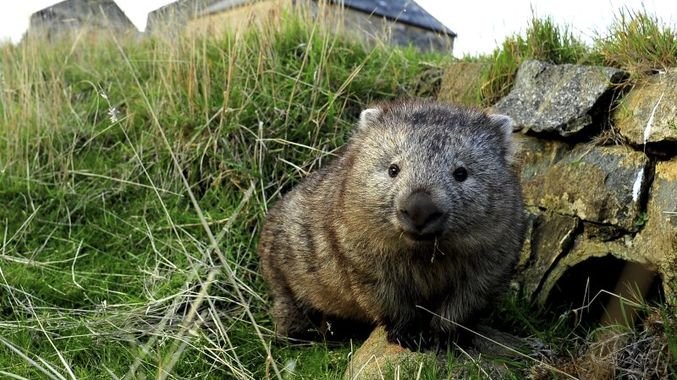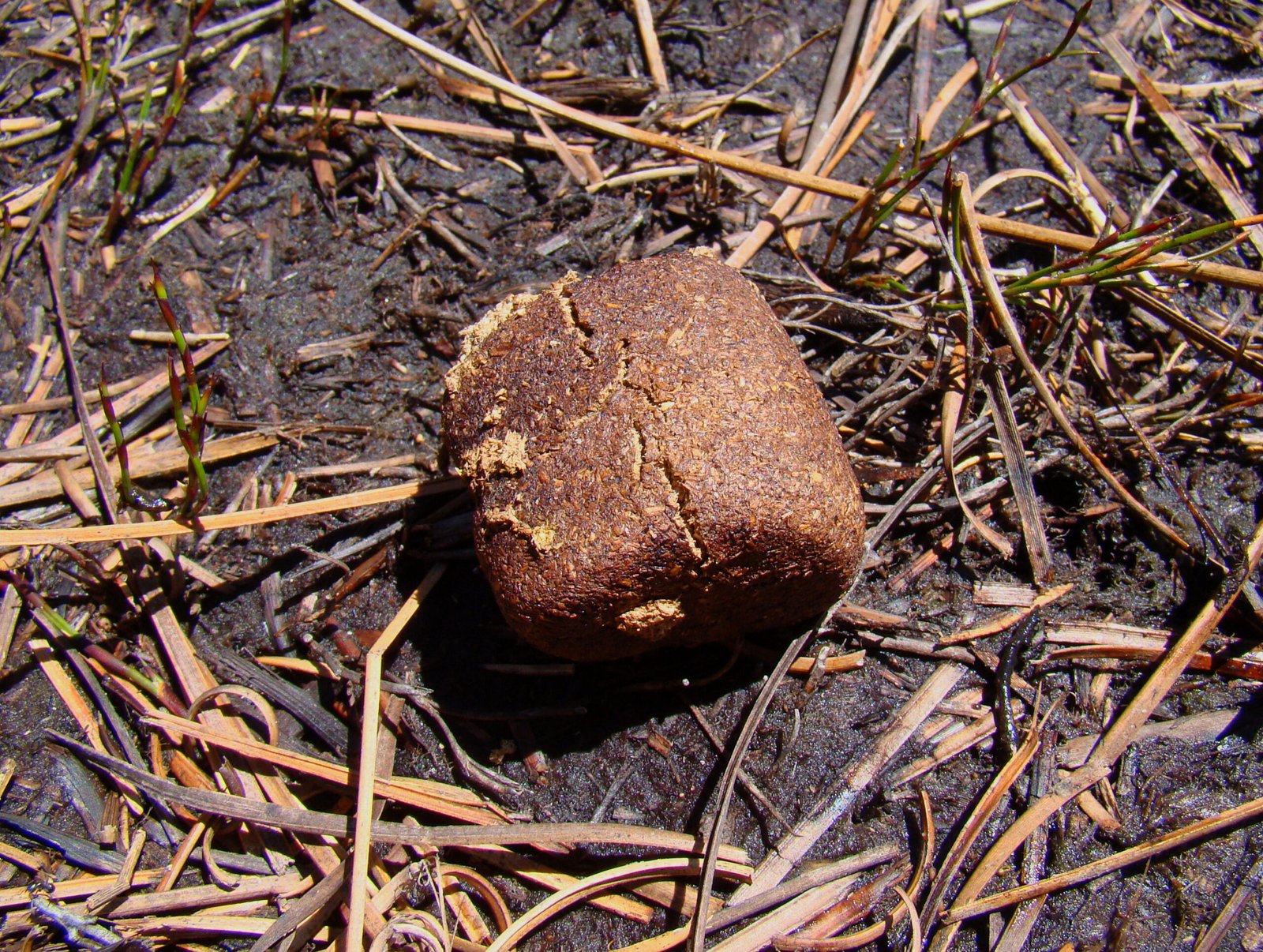Deep in the eucalyptus forests of Australia, a peculiar mystery unfolds every night. As darkness falls, stocky marsupials emerge from their burrows, leaving behind evidence of one of nature’s most bizarre phenomena. While most animals produce cylindrical or spherical droppings, the common wombat defies convention with geometric precision that would make any mathematician jealous.
The Discovery That Shocked Scientists

When researchers first reported cube-shaped wombat droppings in the scientific literature, many colleagues dismissed it as an elaborate hoax. The idea seemed too absurd for nature’s chaotic processes. After all, how could a biological system produce something so geometrically perfect?
Yet there they were, scattered across the Australian landscape like tiny dice rolled by giants. Each cube measuring roughly 2 centimeters on each side, with sharp edges and flat surfaces that seemed almost machine-made. The discovery sent shockwaves through the zoological community and sparked decades of research into this extraordinary phenomenon.
Why Square When Round Works Fine

Most mammals produce cylindrical feces because their intestines are naturally tube-shaped. The circular cross-section of the digestive tract logically creates round droppings as waste material is compressed and expelled. This basic geometry has worked perfectly for millions of years across countless species.
But wombats march to the beat of their own drum. Their unique digestive system operates under completely different rules, transforming ordinary biological waste into geometric masterpieces. The question isn’t why other animals don’t make cubes – it’s how wombats manage to pull off this incredible feat.
The answer lies in a perfect storm of anatomical features that work together like a biological 3D printer. Every element of the wombat’s digestive process contributes to this remarkable transformation.
The Wombat’s Unique Digestive Architecture

Wombats possess one of the most efficient digestive systems in the animal kingdom. Their intestines stretch an impressive 10 meters in length, coiled within their compact bodies like a biological maze. This extended pathway allows maximum nutrient extraction from their fibrous grass diet.
The large intestine, where the magic happens, features variable wall thickness and muscle distribution unlike any other mammal. Certain sections have thick, muscular walls that contract powerfully, while others remain thin and flexible. This asymmetrical design creates the pressure differentials necessary for cube formation.
Think of it like a specialized factory assembly line where each station performs a specific function. The raw material enters as liquid waste and emerges as perfectly formed geometric shapes through a series of precisely timed mechanical processes.
The Drying Process That Changes Everything

Water removal plays a crucial role in transforming soft fecal matter into rigid cubes. Wombats are incredibly efficient at extracting moisture from their waste, removing up to 65% of water content during digestion. This extreme dehydration is essential for maintaining structural integrity.
As the material moves through the intestinal tract, it gradually transforms from liquid to paste to solid. The timing of this dehydration process must align perfectly with the mechanical shaping forces. Too early, and the material becomes too rigid to mold; too late, and it remains too soft to hold its shape.
This delicate balance requires precise coordination between water absorption, muscle contractions, and transit time. The wombat’s body has evolved to orchestrate these processes with remarkable precision, creating ideal conditions for cube formation.
Pressure Zones and Muscular Contractions

The wombat’s large intestine features distinct pressure zones that work together like a biological hydraulic press. Strong circular muscles create high-pressure areas that compress the material, while weaker longitudinal muscles allow expansion in specific directions. This creates the flat surfaces characteristic of cube-shaped droppings.
These pressure differentials don’t occur randomly – they follow specific patterns that repeat throughout the intestinal tract. Each contraction cycle applies force in predetermined directions, gradually sculpting the waste material into its final cubic form. The process resembles injection molding, where material is forced into a specific shape under pressure.
Recent research has revealed that these muscle contractions occur in waves, with each wave adding another layer of geometric precision. The cumulative effect of hundreds of contractions transforms shapeless waste into perfect cubes through pure mechanical force.
The Physics of Cube Formation

Creating cubes from biological material requires overcoming significant physical challenges. The material must maintain structural integrity while being shaped, resist deformation during transport, and retain its form after expulsion. These requirements demand precise control over multiple physical properties simultaneously.
The key lies in understanding material science principles. As the fecal matter dehydrates, it transitions from a viscous liquid to a plastic solid, similar to clay or dough. During this transition phase, the material can be molded into complex shapes while retaining enough flexibility to prevent cracking.
Surface tension forces also play a crucial role. The gradual water loss creates surface tension that helps maintain cube edges and corners. This natural binding force acts like invisible glue, holding the geometric shape together even as internal pressure builds during the formation process.
Temperature and Timing Precision

The wombat’s body temperature creates ideal conditions for cube formation. At 36°C, the fecal material maintains optimal viscosity for shaping while preventing premature hardening. This temperature also supports the enzymatic processes that break down fiber and facilitate water absorption.
Timing is equally critical. The entire process from liquid waste to solid cube takes approximately 14-18 hours, depending on diet and environmental conditions. Each phase must occur within specific time windows to ensure proper formation. Too fast, and the cubes crack; too slow, and they lose their shape.
Environmental factors like ambient temperature and humidity can affect this delicate timing. Wombats in cooler climates may take longer to form cubes, while those in warmer regions complete the process more quickly. This adaptability demonstrates the remarkable flexibility of their digestive system.
The Role of Diet in Cube Quality

Wombat diet directly influences cube formation quality. Their preference for tough, fibrous grasses provides the ideal raw material for construction. These plant fibers act like natural reinforcement, creating internal structure that supports the cubic shape similar to rebar in concrete.
Different grass species produce subtly different cube characteristics. Some create harder, more durable cubes, while others result in softer versions with slightly rounded edges. The mineral content of the vegetation also affects final cube density and color, creating natural variations in the finished product.
Seasonal dietary changes can dramatically impact cube production. During drought periods when high-quality grass is scarce, wombats may produce less perfect cubes or revert to more conventional shapes. This flexibility suggests that cube formation is an optimization process rather than a rigid biological requirement.
Evolutionary Advantages of Cubic Droppings

The cubic shape serves several important evolutionary purposes beyond mere biological curiosity. Cubes stack naturally, creating stable territorial markers that resist rolling away on sloped terrain. This stability is crucial for wombats who live in mountainous regions where conventional round droppings would simply roll downhill.
The flat surfaces of cubic droppings also provide more surface area for scent marking. Wombats rely heavily on chemical communication, and the increased surface area allows for more effective pheromone distribution. This enhanced communication system provides significant advantages in mate selection and territorial disputes.
Additionally, the geometric precision may serve as a display of health and genetic fitness. Producing perfect cubes requires optimal digestive function, suggesting that cube quality could be an indicator of individual health status. Potential mates might evaluate cube perfection as a measure of genetic quality.
Comparing Wombat Digestion to Other Herbivores

Most herbivorous mammals face similar challenges in processing fibrous plant material, yet none have evolved the wombat’s cubic solution. Rabbits, horses, and cows all produce conventional round or oval droppings despite eating similar diets. This comparison highlights the unique evolutionary path that led to the wombat’s remarkable ability.
The key difference lies in intestinal architecture and processing time. While other herbivores prioritize speed and volume, wombats have optimized for maximum nutrient extraction and water conservation. This different evolutionary strategy required radical changes to digestive anatomy that inadvertently enabled cube formation.
Interestingly, some other marsupials show hints of similar capabilities. Koalas, wombats’ closest relatives, produce slightly angular droppings under certain conditions, suggesting that the genetic potential for geometric shaping exists in other species but remains largely unexpressed.
The Fluid Dynamics Inside Wombat Intestines

The movement of digestive material through wombat intestines follows complex fluid dynamics principles. As the liquid waste encounters varying pressure zones, it behaves like a non-Newtonian fluid, changing viscosity in response to applied stress. This property is essential for cube formation.
The intestinal walls create turbulence patterns that mix and homogenize the material while simultaneously applying directional forces. These turbulent flows ensure uniform density throughout each cube while preventing the formation of weak spots that could cause structural failure.
Mathematical modeling of these fluid dynamics reveals that the wombat’s intestinal geometry creates optimal conditions for cube formation. The precise angles and curves generate flow patterns that naturally compress material into cubic shapes through pure physical forces.
Material Science Lessons from Nature

Engineers and material scientists have studied wombat cube formation to understand how biological systems achieve precise geometric shaping. The principles involved could revolutionize manufacturing processes for creating complex shapes from raw materials.
The gradual dehydration process offers insights into controlled material transformation. By carefully managing moisture content, pressure, and timing, manufacturers might develop new techniques for shaping everything from ceramics to composites. The wombat’s approach eliminates the need for external molds or cutting tools.
Researchers have already begun experimenting with bio-inspired manufacturing processes based on wombat digestive mechanics. Early results suggest that this approach could reduce energy consumption and waste production in industrial shaping operations.
Measuring Cube Perfection

Scientists have developed sophisticated methods for measuring the geometric accuracy of wombat cubes. Using high-precision calipers and 3D scanning technology, researchers can detect variations as small as 0.1 millimeters in cube dimensions. This level of precision rivals many manufactured products.
The data reveals that healthy adult wombats consistently produce cubes with less than 5% deviation from perfect geometry. This remarkable consistency suggests that the biological processes involved are highly refined and stable. Individual wombats maintain consistent cube quality throughout their lives.
Interestingly, cube perfection appears to correlate with overall health status. Sick or stressed wombats produce less perfect cubes, supporting the theory that cube quality serves as a biological indicator of fitness and genetic quality.
Environmental Factors Affecting Cube Formation

Weather conditions significantly influence cube production quality. High humidity can interfere with the dehydration process, resulting in softer, less defined cubes. Conversely, extremely dry conditions may cause rapid dehydration that leads to cracking and structural failure.
Seasonal variations also play a role. During winter months when wombats are less active, their digestive processes slow down, allowing more time for perfect cube formation. Summer heat can accelerate the process, sometimes resulting in slightly rushed cubes with minor imperfections.
Altitude affects cube formation as well. Wombats living at higher elevations produce denser, more compact cubes due to lower atmospheric pressure and reduced oxygen levels. These environmental adaptations demonstrate the remarkable flexibility of the wombat’s digestive system.
Research Breakthroughs and Future Studies

Recent advances in medical imaging have allowed scientists to observe cube formation in real-time using ultrasound and MRI technology. These breakthrough observations have revealed previously unknown details about the timing and mechanics of the process.
Current research focuses on understanding the genetic basis for cube formation. Scientists are investigating whether specific genes control the unusual muscle development and intestinal architecture that enables this remarkable ability. This genetic research could provide insights into digestive evolution more broadly.
Future studies may explore whether cube formation capabilities could be transferred to other species through genetic engineering. While purely theoretical at this point, such research could have significant implications for understanding digestive system evolution and adaptation.
Conservation Implications

The wombat’s unique cube-producing ability adds another layer of importance to conservation efforts. As habitat destruction threatens wombat populations, we risk losing one of nature’s most remarkable biological phenomena. Each population that disappears takes with it millions of years of evolutionary refinement.
Climate change poses additional challenges to cube formation. As temperatures rise and precipitation patterns shift, the delicate environmental conditions that support perfect cube production may be disrupted. This could affect wombat communication and territorial behavior in unpredictable ways.
Conservation programs now recognize the importance of protecting not just wombat populations, but also the specific environmental conditions that enable their unique digestive processes. This holistic approach ensures that future generations can continue to marvel at nature’s geometric precision.
The Broader Impact on Science

The study of wombat cube formation has influenced multiple scientific disciplines beyond biology. Mathematicians have developed new geometric models based on the principles involved, while engineers have found applications in manufacturing and materials science.
This research has also challenged traditional assumptions about biological constraints. The discovery that living systems can produce perfect geometric shapes has opened new avenues of investigation into the intersection of biology and mathematics. It demonstrates that nature’s creativity extends far beyond what we previously imagined possible.
The wombat’s achievement serves as a reminder that the natural world still holds countless mysteries waiting to be discovered. Each new revelation about these remarkable creatures expands our understanding of life’s possibilities and challenges us to think more creatively about biological systems.
Conclusion

The wombat’s ability to produce perfect cubes represents one of nature’s most extraordinary achievements in biological engineering. Through a complex interplay of anatomy, physics, and chemistry, these remarkable marsupials have solved a geometric puzzle that continues to amaze scientists and inspire engineers. Their digestive system operates like a living factory, transforming ordinary waste into mathematical perfection through pure biological processes.
Understanding this phenomenon has implications far beyond simple curiosity. The principles involved offer insights into material science, manufacturing, and evolutionary biology that could revolutionize our approach to creating complex shapes and structures. As we face mounting environmental challenges, the wombat’s example reminds us that nature has already solved many of the problems we’re just beginning to understand.
The next time you encounter a perfectly formed cube in the Australian wilderness, take a moment to appreciate the incredible complexity hidden within this simple shape. What other geometric mysteries might be waiting in the animal kingdom for us to discover?



